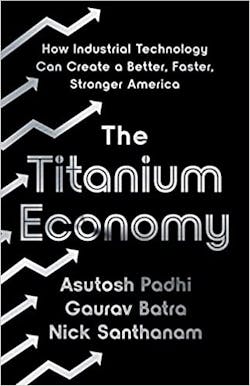Elevating Apprenticeships—and Other Ways for the US to Think Bigger on Talent
The skilled trades have been in a state of crisis for close to a decade, and this has been exacerbated by the Covid-19 pandemic. Only 70 out of 100 positions are being filled, translating into 2.4 million unfilled positions in manufacturing and an estimated $2.5 trillion of lost economic value over the past ten years due to the labor shortage. And the problem is expected to get worse because more people are currently leaving the trades than joining them. Meanwhile, as more companies look to move their supply chains and production back to the U.S., demand for trade workers will grow. We need to consider reforms to aspects of our education system.
First, career and technical education (CTE) can be reinvigorated in high schools, with a well-structured entrance process for interested students. CTE was long an integral part of the US education system, but between 1990 and 2009, CTE credits earned by high-schoolers decreased 14%. Over half of CTE-related jobs available in the United States are in four fields: business management, manufacturing, hospitality and marketing. However, these fields account for only a quarter of CTE course concentrations today. While the past decade has seen a resurgence of interest in CTE as states instituted a patchwork of new laws or policies regarding the programs, we can support this on a national level and accelerate the resurgence of CTE for the next generation.
Second, there is an opportunity to create a national apprenticeship institute that works to elevate the importance of apprenticeships in American culture to the level of university degree programs. The federal government could help create such education and apprenticeship programs through the introduction of supportive policies and the provision of funding. Germany’s dual-training apprentice system is a leading model to consider, with apprenticeship training provided by companies and academic classes alike. Industrial firms in the country see the training they offer as the best way to acquire skilled staff. As for students, more than half of high school graduates go into the system, with the apprenticeships being just as celebrated as college-degree programs.The apprenticeship institute could be tasked with launching a national campaign to rebrand apprenticeships and vocational training to combat the negative perceptions in the American psyche. Singapore is a shining example of a successful national branding campaign—today, 90% of their bottom-quartile achievers graduate from a technical institute and secure well-paying jobs, whereas the U.S. bottom quartile is at the highest risk to drop out of high school.
A third necessary component to consider in any reform effort is a national strategy for providing the upskilling that workers will need as the technological disruption of the Fourth
Industrial Revolution proceeds. As machines increasingly take over manual tasks, companies and the government can assist trade workers in adapting to the new roles they’ll be asked to fill. This reskilling of the workforce to work in increasingly automated plants won’t be easy. Workers will be required to learn new skills such as writing software, even at the lowest levels of production, and contribute to designing better products and conducting data analytics. They’ll need to become better problem-solvers, making use of the tremendous amount of data that will be at their disposal. The ability to think critically about problems and communicate with coworkers will be required of every factory employee of the future.
SkillsFuture and its sister agency Workforce Singapore (WSG) are a good model of a skill-building program. It’s open to all citizens, regardless of background. Mid-career individuals are supported and acquire relevant skills through training directly with reputable companies, which is something the U.S. can replicate. The federal government could also rewrite unemployment provisions to support part-time work and technology transitions through shared government-employer responsibilities, as Germany does, which would enable workers to stay employed and productive while they learn new skills.
12 Ideas for Industrial Technology Education
- Reinvigorate career and technical education (CTE) high school programs and develop a robust and well-structured entrance process for students who are interested in skills-based education.
- Create opportunities for free post-secondary college, vocational and master’s education programs to develop the most advanced, skilled workforce in the world and increase opportunities for marginalized groups.
- Increase enrollment in skills-based post-secondary education to train students with technical skills that are in demand by employers.
- Create “master” school hubs, following the example of Germany’s “Meisterschules,” a national network of partnered programs between education and industry with focuses on specific areas of expertise, including AI, additive manufacturing, robotics and more.
- Elevate internships (and eliminate unpaid internships) to position them as an onboarding mechanism for apprenticeships that incentivizes skill-building in early-tenured employees.
- Create a national “apprenticeship institute” network across all states to elevate the importance of apprenticeships in American culture to the level of university degree programs.
- Launch a national campaign to rebrand apprenticeships and vocational training to combat the perception that they are inferior to university degrees.
- Develop a national strategy around upskilling to “focus on the future” by creating leading-edge skill-building and upskilling programs that will return long-run value to employees and employers.
- Scale and incentivize efforts to connect jobseekers and employers from the beginning of education to employment, engaging everyone in mentorship from the start of their careers.
- Incentivize “pay for success” training programs, potentially with traditional community college and university systems, in which program fees are partly based on whether a student is hired.
- Develop workforce training programs, specifically focused on upskilling low-wage earners and underrepresented groups to close the gap in skills needed by future industries.
- Create a nationally recognized credential verification re- source that can help jobseekers prove their skills to employers by providing a centralized verification system.
Asutosh Padhi is a McKinsey & Company North America managing partner and co-author of The Titanium Economy: How Industrial Technology Can Create a Better, Faster, Stronger America with Gaurav Batra and Nick Santhanam. Copyright © 2022. PublicAffairs, an imprint of Hachette Book Group, Inc.

